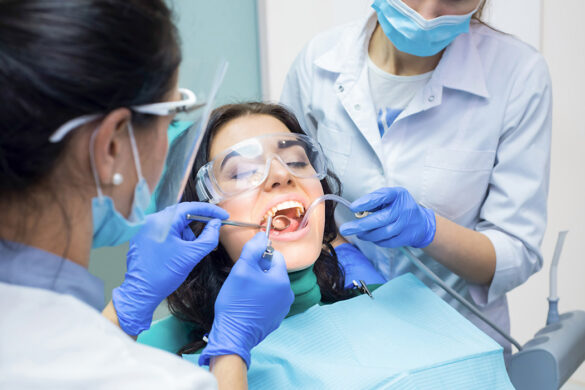A New Age of Dentistry: Investigating Latest Treatments and Technologies
This field of oral health has witnessed significant transformations in recent times, propelled by progress in technological innovation and a more profound understanding of client care. As we enter this modern age of dentistry, people are more and more benefiting from cutting-edge treatments that not only improve dental health but also enhance overall health. With a focus on minimally invasive procedures and tailored care, contemporary dentistry is redefining the patient journey and setting new benchmarks in dental care management.
From state-of-the-art diagnostic technologies to leading-edge treatment options, the latest developments in dental practices are making visits more streamlined, comfortable, and efficient. Patients can now consider options such as remote dental consultations, 3D printing in prosthetics, and laser therapy, which provide faster results with minimal discomfort. As we explore the world of contemporary dental treatments, we will discover how these innovations are transforming the landscape of oral health and enhancing the lives of countless individuals.
Cutting-Edge Dental Treatments
The field of oral treatments is undergoing a remarkable change thanks to technological advancements advancements. One of the most noteworthy advancements is the implementation of in-office 3D printing, which allows dentists to manufacture dental crowns, dental bridges, and even personalized aligners within hours in a matter of hours. This not just cuts down on client waiting times but also boosts the precision of dental appliances, offering a better fit and greater comfort for clients. The convenience of having these treatments delivered in one visit greatly improves the overall patient experience.
Additionally advanced procedure that is gaining popularity is teledentistry. This cutting-edge strategy makes use of virtual meetings and digital technology technology, permitting dentists to deliver virtual consultations, diagnose conditions, and even administer subsequent care remotely. This method is particularly helpful for clients in rural areas or those with physical constraints, as it removes spatial barriers to receiving necessary dental care. This method not only saves time but also decreases the need for in-person consultations, making oral care more attainable to all.
In addition, laser dentistry has transformed various dental treatments, making them more patient-friendly and more effective. Lasers are used for a variety of treatments, from cavity detection to gum disease management, and even whitening teeth. The precision of laser techniques results in lower pain levels, reduced bleeding, and quicker healing times when compared with conventional methods. As the field of dentistry continues to progress, these cutting-edge procedures are establishing new standards in the industry of dentistry, emphasizing patient comfort and care outcomes.
Innovative Techniques in Dentistry
The landscape of dental care has been changed by innovative technologies that improve both the efficiency and comfort of dental treatments. One of the most significant innovations is the use of electronic imaging, which permits dentists to obtain high-resolution images of a patient's mouth with limited radiation exposure. Techniques such as CBCT computed tomography provide three-dimensional views that refine diagnosis and treatment planning for procedures like dental implants and orthodontics. This transition to digital imaging optimizes procedures and makes it more accessible for both individuals and dentists to grasp treatment options.
Another notable development is the integration of laser technology into dental practices. Lasers are now used for multiple applications, including cavity detection, periodontal disease treatment, and teeth whitening. They offer accurate treatment with reduced discomfort, reducing the need for anesthesia and promoting quicker healing times. The ability to carry out procedures with lower invasiveness not only enhances patient experience but also facilitates for quicker recovery, making routine dental visits far less daunting.
Additionally, the growth of virtual dentistry has reshaped patient interaction and access to dental care. Through protected video consultations, patients can talk about symptoms, receive initial assessments, and obtain instructions on whether they need to make an appointment at a dental office. This method is particularly beneficial for those in isolated areas or with movement challenges. As technology continues to advance, teledentistry will probably play an increasingly important role in broadening access to dental care and enhancing the overall patient experience.
The Future of Dental Care
As technological progress continue to revolutionize the medical arena, the future of dental care promises to be more oriented towards patients and effective. citydent of AI into diagnostic and treatment planning is one of the most noteworthy developments. AI can examine large quantities of data from dental records, X-rays, and even intraoral scans to support dentists in developing personalized treatment plans customized for individual requirements, thereby boosting outcomes and increasing patient satisfaction.
Furthermore, advancements in materials science are driving the development of more durable and aesthetically pleasing dental materials. Bioactive materials, for instance, not only repair but also enhance the health of teeth and gums. These materials promote remineralization and can assist in the regeneration of oral tissues, making treatments like fillings and crowns not only functional but also helpful for overall oral health. This shift towards more innovative materials will push the boundaries of traditional dental treatments.
Lastly, virtual dentistry is set to reshape access to dental care, especially in underserved areas. Virtual consultations can mitigate barriers such as travel and cost, allowing dentists to provide preliminary assessments and guiding patients in their dental health management from a distance. As technology keeps to evolve, the integration of telehealth into dental care ensures that more people can get timely and appropriate treatments, leading to better oral health outcomes for all.
